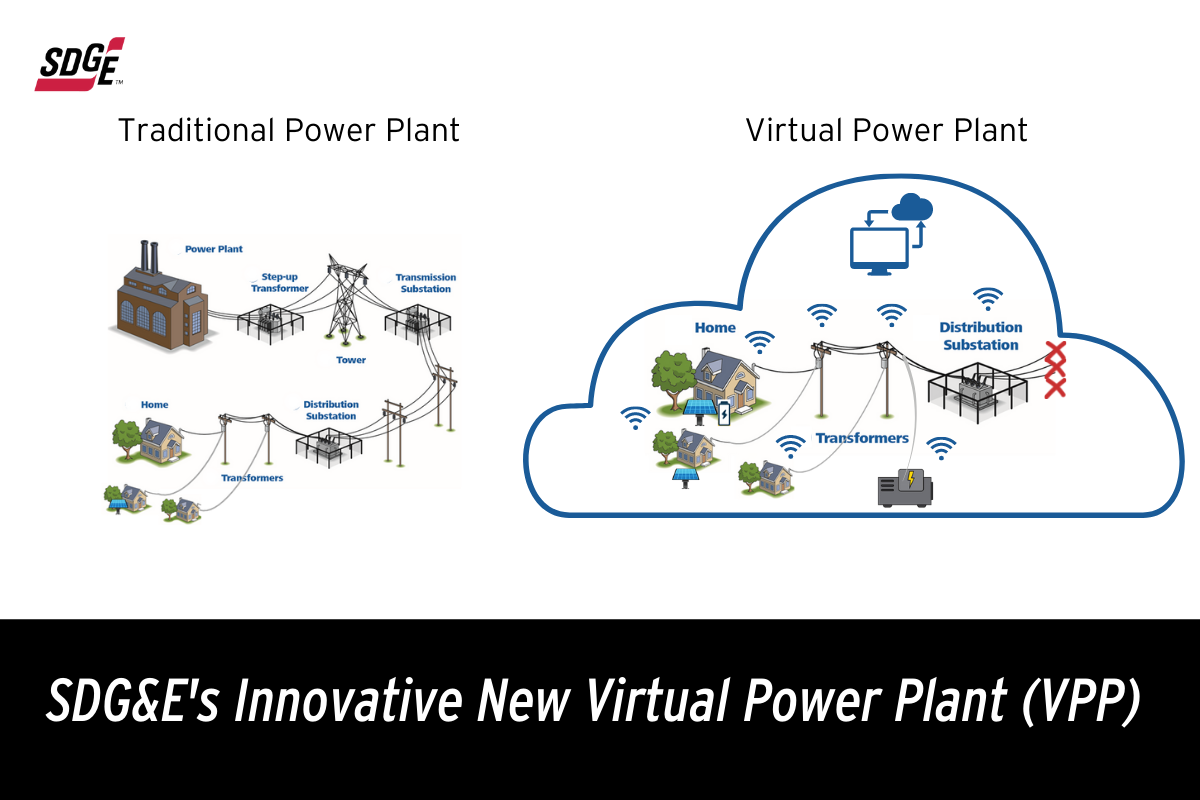We all know what conventional power plants look like. They generate electricity from fuel sources such as natural gas. When electricity demand is high, and supplies are tight, they kick into high gear to keep the lights on.
With advanced technology, it is now possible to establish a virtual power plant (VPP) to meet increased energy demand. The beauty of virtual power plants is that they don’t exist in a physical space. It is a cloud-based innovation that can help with strengthening grid reliability.
As part of our sustainability strategy, we will launch a pilot VPP this year.
So what is a Virtual Power Plant (VPP)?
A virtual power plant is a collection of privately-owned, government or community energy resources that are interconnected and operated together. These resources can include large-scale assets such as wind farms, solar farms and energy storage, as well as customer-owned systems such as rooftop solar, home battery systems and smart thermostats. During periods of increased energy demand, these distributed energy resources can be accessed by a utility provider to put electricity on the grid.
While the concept of a VPP has been around since the 1990s, it has only become viable in recent years due to two advancements: the rise in renewable energy generation and energy storage in parallel with cloud-based technologies that make it easier to access and manage distributed energy resources.
How are VPPs different from Microgrids?
Like VPPs, microgrids can also leverage distributed energy resources. But microgrids are designed to serve a specific geographical area such as a small town center or critical community resources, like police and fire stations or a community resource center, to support residents during extended Public Safety Power Shutoffs. Microgrids can disconnect from the power grid and operate independently – in a sense, acting as "islands" of power.
In contrast, VPPs tend to encompass a larger geographical area (with no specific physical boundaries) and remain flexible to expand/contract energy use depending on market conditions, grid needs or customer demand. VPPs can support many different energy needs, including providing power to a microgrid if resources are within the boundaries of a microgrid region.
SDG&E and VPPs
Our VPP pilot will take place in Shelter Valley, located in eastern San Diego County, about 12 miles east of Julian on the desert floor where we are also working to build a renewable energy-powered microgrid to reduce the impact of Public Safety Power Shutoffs (PSPS).
The pilot will test how to best coordinate the dispatch of customer resources enrolled in the VPP to help balance the supply and demand for energy within the microgrid. Additionally, we can dispatch these same VPP resources to meet the needs of the larger power grid. Lessons learned from this project will be applied to future projects to safely and cost-effectively integrate customer-owned resources to enhance grid reliability.


